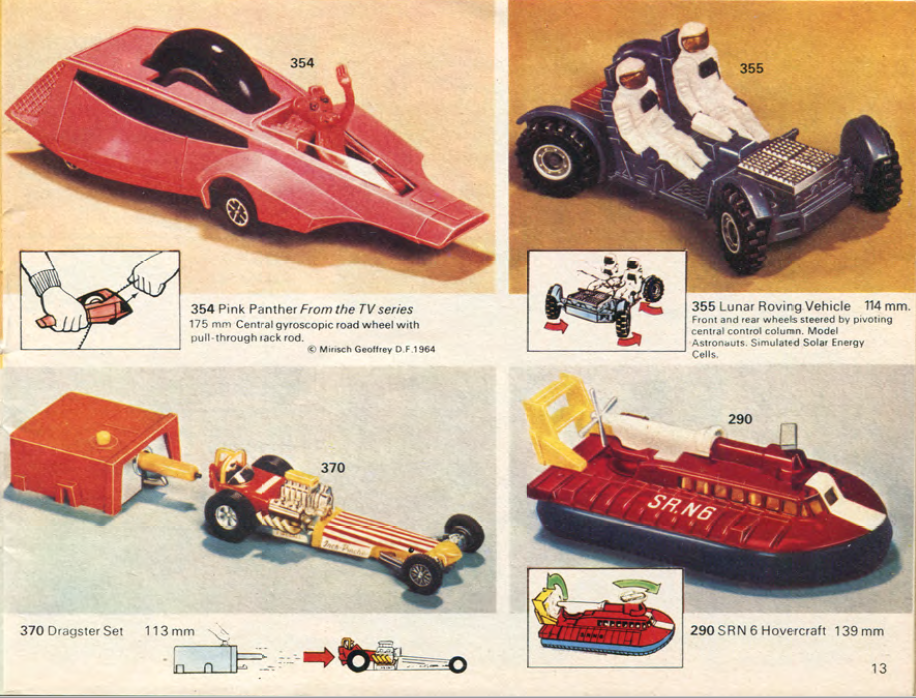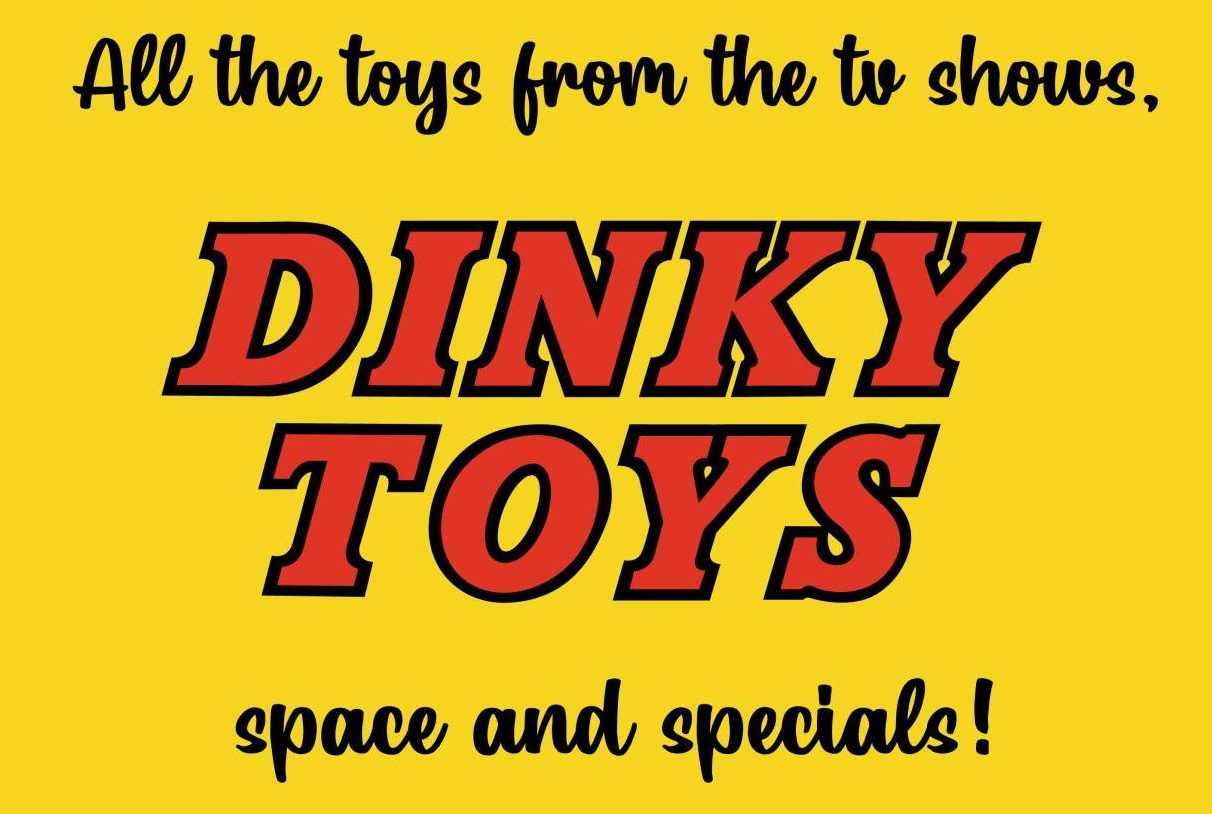DINKY 355 LUNAR ROVER (1972-1976):
As the Moon landings progressed Dinky reflected the interest in space and produced the 355 Lunar Rover Vehicle based on NASA’s Lunar Roving Vehicle (LRV) which was a battery-powered four-wheeled rover used on the Moon during the last three missions of the U.S.A. Apollo programme (Missions 15, 16, and 17) during 1971 and 1972. The LRV could carry two astronauts, their equipment, and lunar samples.





The Lunar Rover four wheels could be turned using the lever between the two astronauts.
Dinky 1027 (1972 -1975) LUNAR RIVER VEHICLE (KIT):
In 1971, probably because of the ownership by Airfix, Dinky Toys Action Kits were introduced. There were thirty-four kits issued and they featured cars, lorries, public transport, military and aeroplanes as well as the Lunar Rover. The kits included paint, parts and assembly instructions.

This is the model made but not painted.

And this is with paint applied.


The LUNAR ROVING VEHICLE:
The Lunar Roving Vehicle (LRV) was an electric vehicle designed to operate in the low-gravity vacuum of the Moon and to be capable of traversing the lunar surface, allowing the Apollo astronauts to extend the range of their surface extravehicular activities. Three LRVs were driven on these Moon missions, on Apollo 15 by astronauts David Scott and Jim Irwin, on Apollo 16 by John Young and Charles Duke, and on Apollo 17 by Gene Cernan and Harrison Schmitt.
The Lunar Roving Vehicle frame was 3.1 meters long with a wheelbase of 2.3 meters. And consisted of a 3 part chassis which was hinged in the centre so it could be folded up and hung in the Lunar Module bay. A large mesh dish antenna was mounted on a mast on the front centre of the rover.

A T-shaped hand controller situated between the two seats controlled the four drive motors, two steering motors and brakes. Moving the stick forward powered the LRV forward, left and right turned the vehicle left or right, pulling backwards activated the brakes.
Four lunar rovers were built, one each for Apollos 15, 16, and 17, and one that was used for spare parts after the cancellation of further Apollo missions. Harrison Schmitt of Apollo 17 said, “….the Lunar Rover proved to be the reliable, safe and flexible lunar exploration vehicle we expected it to be.
LUNAR ROVER v DINKY LUNAR ROVER:
The Dinky model was a lot simpler visually than the actual LRV. The dish antenna missing at the front was a significant omission. The model’s central control for the wheels reflected the actual mechanism for doing this. And of course the LRV was never blue! The kit, made of unpainted metal and provided with orange paint for the wheel arches and other details was a far more accurate livery.

ODDITIES AND RARITIES:
Two rare commercial code 2s of the Lunar Rover are known to exist, one white and the other green, painted with paint containing ‘Tioxide’. A Spot-On Land Rover and a Corgi Concorde were also branded with Tioxide decals.
The link between the Lunar Rover and Tioxide paint is interesting. The paint was used on the external surfaces of the Saturn V launch vehicle that carried the Apollo missions to the moon but in addition, the Apollo 14 mission which landed on the moon (but not with a Lunar Rover) carried an experiment on board which utilised different paint finishes, including Tioxide, to evaluate the effect of lunar dust on their surfaces. The report went onto say that:
The coatings may be used in subsequent lunar missions on such items as the lunar communications relay unit, the lunar roving vehicle and the television camera.
Apollo 15 was the first mission to use an LRV so may well have had TiO2 fixtures and fittings.



BOXES:
The first 355 LRVs had bubble boxes.

The last models had the short lived tall bubble boxes.

CATALOGUES:
The 355 Rover featured first in the 1972 catalogue and the 1027 kit version was marked as ‘coming soon’.





MISCELLANEOUS:
A selection of colour trials featured at the 2001 100th anniversary Meccano exhibition in Liverpool.

In 1979 TV Action comic ran a competition to win 75 Dinky Lunar Rovers.
and here are the questions….good luck!


Did Dinky do the Lunar Roving vehicle completely in orange ? I have one in play worn condition but can’t seem to find another one online
LikeLike
Hi Dylan, The orange paint probably came from the Dinky Lunar Rover kit (see above) which was provided with orange paint. The instructions suggested painting the wheel arches and a couple of other areas so perhaps the original owner got carried away after building it! I’m not aware of a production run orange version. Cheers Kevin
LikeLike